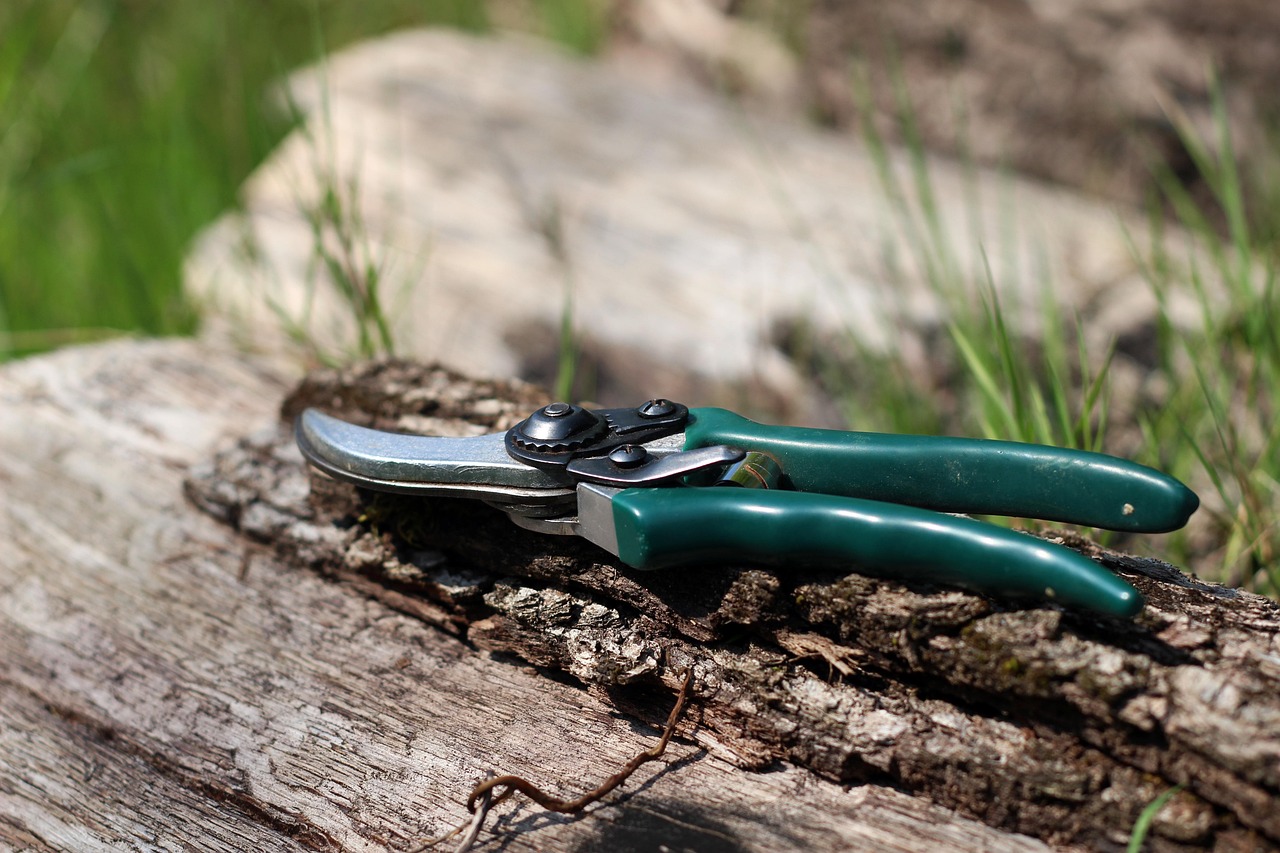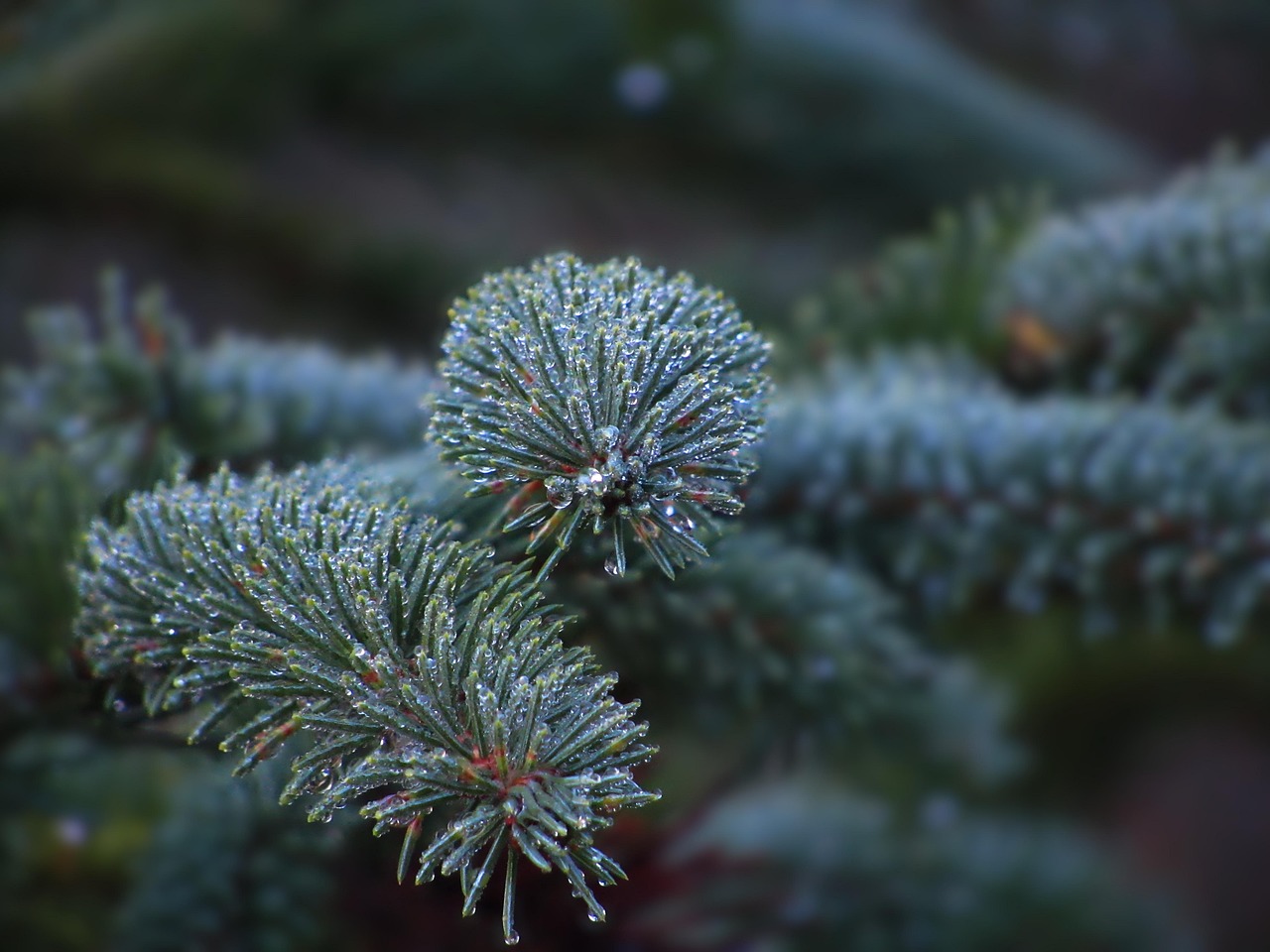Pruning Blue Spruce trees enhances their effectiveness as windbreaks by promoting dense foliage and healthy growth. Proper pruning techniques ensure that the trees maintain a strong structure while maximizing their ability to block wind and provide shelter.
Blue Spruce (Picea pungens) is a popular choice for landscaping and windbreaks due to its striking blue-green needles and conical shape. These trees can grow up to 75 feet tall and 20 feet wide, making them excellent for creating natural barriers against wind and snow. However, to ensure their optimal performance as windbreaks, regular pruning is essential. Pruning helps to maintain density, remove dead or diseased branches, and promote healthy growth.

Windbreaks serve multiple purposes. They protect homes, crops, and livestock from harsh winds, reduce soil erosion, and improve microclimates. When properly pruned, Blue Spruce trees can grow denser, providing better coverage and thus enhancing their windbreak effectiveness.
Understanding Blue Spruce Growth and Structure
Before delving into the specifics of pruning, it is crucial to understand the natural growth patterns of Blue Spruce trees. They typically have a pyramidal shape when young, which matures into a more rounded form as they age. The branches grow horizontally and tend to droop slightly as they mature. This growth habit contributes to their ability to act as effective windbreaks.
Key features of Blue Spruce include:

- Needles: Blue Spruce needles are sharp and can range from 1 to 3 inches in length. They are blue-green in color, which is a significant aesthetic feature.
- Bark: The bark of mature Blue Spruce is thin and scaly, often grayish-brown in color. It provides some protection against pests and diseases.
- Cones: The cones are cylindrical and can vary in length from 3 to 4 inches. They mature in the fall and drop seeds for reproduction.
The Importance of Pruning
Pruning is a critical aspect of maintaining healthy Blue Spruce trees. It not only helps enhance their aesthetic appeal but also contributes significantly to their function as windbreaks. Through regular pruning, you can achieve the following benefits:
- Improved Air Circulation: Pruning allows for better air flow through the branches. This reduces humidity around the tree and minimizes the risk of fungal diseases.
- Encouraged Growth: By removing dead or overcrowded branches, you encourage healthier new growth. This leads to a denser canopy over time.
- Structural Integrity: Properly pruned trees are less likely to suffer from structural issues during storms. Stronger branches can withstand heavy winds and snow loads.
Understanding the right time and techniques for pruning is essential for achieving these benefits. The best time to prune Blue Spruce trees is late winter or early spring before new growth begins. This timing helps minimize stress on the tree and allows for quick healing of cuts.
Pruning Techniques for Blue Spruce
When it comes to pruning Blue Spruce, several techniques can be employed to ensure healthy growth and optimal windbreak effectiveness. Here are some recommended practices:

- Remove Dead or Damaged Branches: Start by inspecting the tree for any dead, damaged, or diseased branches. These should be cut back to healthy tissue or removed entirely.
- Thin Out Overcrowded Areas: If certain areas of the tree become too dense, selectively prune some branches to improve air circulation and light penetration.
- Crown Reduction: If the tree grows too large for its space, consider reducing the overall height or width by trimming back the outer branches. Ensure that cuts are made just above a bud or lateral branch.
- Avoid Tipping: Tipping involves cutting off the top of a branch. This technique can lead to weak regrowth. Instead, focus on selective thinning.
Tools Needed for Pruning
Using the right tools is vital for effective pruning. Here are some essential tools you will need:
| Tool | Description |
|---|---|
| Pruning Shears | Ideal for cutting smaller branches up to ¾ inch thick. |
| Loppers | Useful for branches up to 2 inches thick, providing leverage for clean cuts. |
| Saw | A pruning saw is necessary for larger branches that cannot be cut with shears or loppers. |
| Safety Gear | Always wear gloves, goggles, and protective clothing while pruning to avoid injuries. |
By equipping yourself with the proper tools and techniques, you will be well on your way to effectively pruning your Blue Spruce trees. This will not only enhance their appearance but also maximize their functionality as windbreaks.
Timing Your Pruning Efforts
Timing is crucial when it comes to pruning Blue Spruce trees. The right time can significantly affect the health and growth of the tree. Pruning at the wrong time may lead to stress or damage, hindering the tree’s natural growth cycle.

The ideal time to prune Blue Spruce is during late winter to early spring, just before new growth begins. This timing allows for several benefits:
- Minimized Stress: Pruning during dormancy reduces stress on the tree, allowing it to focus energy on recovery and new growth.
- Better Visibility: Without leaves, it is easier to see the structure of the tree and identify which branches need attention.
- Encouraged New Growth: Pruning just before the growing season encourages healthy new growth as the tree begins to leaf out.
Avoid pruning in late summer or fall. Cutting back branches during this period can stimulate new growth that may not have time to harden off before winter. This new growth is vulnerable to frost damage, which can weaken the tree.
Pruning Techniques for Maximum Density
To ensure that Blue Spruce trees develop a dense canopy, specific pruning techniques can be employed. These methods focus on shaping the tree while promoting healthy growth patterns.
Heading Back
Heading back involves cutting back the tips of branches to promote bushier growth. This technique encourages lateral branching, which can lead to a denser appearance over time. Here are some guidelines:
- Make cuts just above a bud or lateral branch to encourage new growth in that direction.
- Avoid removing more than one-third of the branch length at a time to prevent stress.
- Focus on the outer branches for increased density and improved windbreak effectiveness.
Selective Thinning
Selective thinning is essential for maintaining proper air circulation and light penetration within the canopy. This technique can help achieve a balance between density and health:
- Identify Overcrowded Areas: Look for sections where branches are crossing or tightly packed.
- Remove Interior Branches: Carefully cut away some of the inner branches to open up the canopy while maintaining the overall shape.
- Preserve Healthy Structure: Always prioritize retaining healthy, well-positioned branches that contribute to the tree’s integrity.
Common Mistakes to Avoid When Pruning Blue Spruce
While pruning is beneficial, certain common mistakes can negate its advantages. Understanding these errors can help you achieve better results.
- Over-Pruning: Removing too many branches can stress the tree and hinder its ability to photosynthesize effectively. Always err on the side of caution.
- Improper Cuts: Making jagged cuts or cutting too close to the trunk can result in damage and increase vulnerability to pests and diseases.
- Ignoring Tree Health: Always assess the overall health of the tree before pruning. If it shows signs of disease or stress, consult an arborist for guidance.
Pest and Disease Management During Pruning
Pruning presents an opportunity not only for shaping and maintaining your Blue Spruce but also for assessing its health. Pests and diseases can significantly impact the effectiveness of your windbreak. Here are some common issues to look out for:
| Pest/Disease | Description | Treatment |
|---|---|---|
| Spruce Budworm | A caterpillar that feeds on new buds, leading to defoliation and reduced growth. | Use insecticides as recommended, and maintain overall tree health. |
| Needle Cast | A fungal disease causing needles to turn yellow and fall prematurely. | Improve air circulation through pruning and apply fungicides if necessary. |
| Scale Insects | Small pests that attach themselves to branches, weakening the tree by sucking sap. | Use horticultural oils or insecticidal soaps for control. |
| Canker Diseases | Injuries on branches caused by fungi, leading to dieback. | Remove affected limbs and ensure proper pruning techniques are followed. |
Regular inspections for signs of pests or diseases are vital, especially before and after pruning. By addressing these issues promptly, you can improve your Blue Spruce’s overall health and windbreak effectiveness.
Maintaining Your Blue Spruce After Pruning
Post-pruning care is essential for ensuring that your Blue Spruce thrives after undergoing trimming. Proper maintenance will support recovery and encourage robust growth:
- Watering: Adequate watering post-pruning is crucial. Ensure the soil remains moist but not waterlogged, especially during dry spells.
- Mulching: Apply a layer of mulch around the base of the tree. This helps retain moisture and suppress weeds while providing nutrients as it decomposes.
- Nutrient Management: Consider using a slow-release fertilizer to provide essential nutrients that support new growth after pruning.
By following these post-pruning practices, you will help your Blue Spruce recover faster and achieve optimal windbreak density and effectiveness over time.
Understanding the Growth Cycle of Blue Spruce
To effectively prune Blue Spruce trees, it is essential to understand their growth cycle. This knowledge can help in planning pruning activities and optimizing tree health. Blue Spruce typically experiences growth in two phases: active growth and dormancy.
Active Growth Phase
During the active growth phase, which occurs in spring and early summer, Blue Spruce trees produce new shoots and expand their needle coverage. It is the most critical time for the trees, as they are busy photosynthesizing and storing energy for future growth.
Key characteristics of the active growth phase include:
- New Growth: The new shoots are tender and require careful handling during pruning.
- Increased Nutrient Demand: The tree will need more water and nutrients during this time to support new growth.
- Vulnerability: New growth is more susceptible to environmental stressors such as pests and diseases.
Dormancy Phase
The dormancy phase occurs in late fall through winter. During this period, the tree conserves energy and prepares for the next growing season. Pruning should ideally take place during this phase to minimize stress on the tree.
Characteristics of the dormancy phase include:
- Reduced Activity: The tree’s metabolic processes slow down, making it less responsive to pruning stress.
- Visibility of Structure: With fewer leaves, it is easier to see branch structure and identify areas that need attention.
- Hardening Off: The tree prepares itself to withstand colder temperatures, making it a safer time for pruning.
Understanding Windbreak Benefits
Blue Spruce trees serve not just as aesthetic additions to landscapes but also as vital windbreaks. Understanding the benefits of having Blue Spruce as windbreaks can inform better pruning practices.
Wind Protection
The primary function of a windbreak is to reduce wind speed. By strategically planting and maintaining Blue Spruce trees, you can create a barrier that lessens wind impact on your property or agricultural land.
- Reduced Erosion: Windbreaks help prevent soil erosion caused by high winds, protecting the integrity of the land.
- Protection for Wildlife: Windbreaks provide shelter for birds and other wildlife, promoting biodiversity.
- Microclimate Creation: Blue Spruce trees can create a more favorable microclimate by shielding areas from harsh weather conditions.
Aesthetic and Economic Value
In addition to their functional benefits, Blue Spruce trees also enhance the visual appeal of landscapes. A well-maintained windbreak can increase property value and provide economic benefits through improved crop yields in adjacent fields.
- Increased Property Value: Attractive landscapes contribute positively to real estate value.
- Curb Appeal: A lush windbreak enhances the overall look of residential properties.
- Crops Yield Improvement: By reducing wind exposure, crops can grow more robustly, leading to increased yields.
Advanced Pruning Techniques
Once you have mastered basic pruning techniques, consider implementing advanced methods to maximize the density and effectiveness of your Blue Spruce windbreaks. These techniques require a deeper understanding of tree physiology and growth patterns.
Crown Thinning
Crown thinning involves selectively removing branches throughout the canopy to reduce weight while maintaining overall shape. This technique enhances light penetration and air circulation within the tree. Here’s how to approach it:
- Selectively remove smaller branches without compromising the structure of larger branches.
- Aim for a balanced look while ensuring that light can reach lower branches, promoting even growth.
- Avoid removing more than 25% of the crown to prevent shock.
Crown Lifting
Crown lifting is a technique that involves removing lower branches to increase vertical clearance. This method can be useful for enhancing visibility and allowing for easier access around the tree.
- Identify Lower Branches: Choose branches that are lowest to the ground and are not essential for the tree’s shape.
- Make Clean Cuts: Always cut just above a lateral branch or bud to encourage healthy regrowth.
- Avoid Over-Lifting: Leaving too few lower branches can lead to an unbalanced appearance, so be cautious about how much you remove.
Pest and Disease Monitoring Post-Pruning
After pruning, it is essential to monitor your Blue Spruce for any signs of pests or diseases. Regular checks can help catch any issues early, allowing for prompt action.
- Inspect Regularly: Make routine inspections every few weeks during the growing season to identify any problems quickly.
- Look for Symptoms: Watch for yellowing needles, resin exudation, or visible pests on branches.
- Implement Control Measures: If pests or diseases are detected, apply appropriate treatments immediately to minimize damage.
Caring for your Blue Spruce includes monitoring its health before and after pruning. By staying vigilant, you can ensure that your trees remain strong and effective as windbreaks for many years to come.
Long-Term Care for Blue Spruce Trees
Beyond pruning, long-term care is vital for the health and effectiveness of Blue Spruce trees as windbreaks. This ongoing maintenance ensures that your trees continue to thrive and serve their purpose effectively over the years.
Soil Management
Healthy soil is fundamental for the growth of Blue Spruce trees. Ensuring that the soil has the right pH and nutrient levels will promote strong root systems and robust tree health.
- Soil Testing: Conduct regular soil tests to determine pH and nutrient levels. Blue Spruce prefers slightly acidic to neutral soil (pH 6.0 to 7.0).
- Amendments: Based on soil test results, consider adding organic matter or fertilizers to improve nutrient availability.
- Aeration: Aerating the soil can help improve drainage and root health, especially if the soil becomes compacted.
Irrigation Practices
Proper irrigation is essential, especially during dry spells. Blue Spruce trees require consistent moisture, particularly when they are young or after pruning.
- Deep Watering: Water deeply but infrequently to encourage deep root growth. Aim for around 1 inch of water per week during dry periods.
- Mulching: As mentioned previously, mulch helps retain soil moisture and regulates temperature. Keep mulch a few inches away from the trunk to prevent rot.
- Monitoring: Regularly check soil moisture levels, especially during hot weather. Adjust watering schedules accordingly.
Seasonal Considerations
Each season presents unique challenges and opportunities for Blue Spruce care. Being aware of these can help you tailor your approach accordingly.
- Spring: Focus on pruning and fertilizing as new growth begins. Monitor for pests that may emerge with warmer weather.
- Summer: Maintain watering and watch for signs of heat stress or pests. Summer is also a good time for monitoring tree density.
- Fall: Prepare for winter by reducing water as temperatures drop. Fall is also an excellent time to apply mulch to protect roots.
- Winter: Inspect trees for snow or ice damage. Ensure that branches are not overloaded and consider removing excess snow if necessary.
Pest and Disease Prevention Strategies
Preventing pests and diseases proactively can save you time, money, and effort in the long run. Implementing an integrated pest management (IPM) approach can be beneficial.
- Cultural Controls: Maintain healthy trees through proper pruning, watering, and fertilization. Healthy trees are less susceptible to pests and diseases.
- Biological Controls: Encourage beneficial insects such as ladybugs that feed on harmful pests. Plant flowers that attract these beneficial creatures nearby.
- Chemical Controls: If necessary, use pesticides judiciously. Always follow label instructions and consider applying treatments during times when beneficial insects are less active.
Final Thoughts
Pruning Blue Spruce trees is an essential practice that enhances their effectiveness as windbreaks while promoting density and overall health. By understanding their growth cycles, employing proper pruning techniques, and maintaining ongoing care, you can ensure that these beautiful trees thrive in your landscape.
The benefits of healthy Blue Spruce extend beyond aesthetics; they provide significant environmental advantages, including wind protection, soil erosion reduction, and improved microclimates. Regular monitoring for pests and diseases, along with seasonal care strategies, will help keep your trees healthy and resilient.
In summary, successful Blue Spruce pruning and care require a comprehensive approach that includes timing, technique, monitoring, and ongoing maintenance. By committing to these practices, you can enjoy a lush, effective windbreak that enhances both your property and the surrounding environment for years to come.
